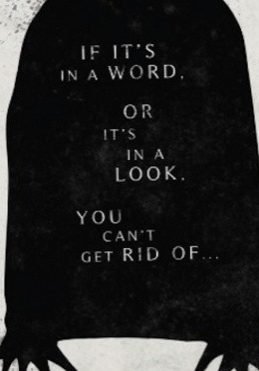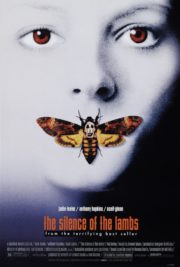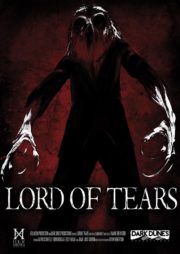Whispers from the Dark: Unveiling The Babadook
“If it’s in a word or it’s in a look, you can’t get rid of the Babadook.” This chilling line echoes throughout Jennifer Kent’s 2014 psychological horror masterpiece, ‘The Babadook.’ The film explores the dark and twisted tale of a troubled widow, Amelia (Essie Davis), and her young son, Samuel (Noah Wiseman), as they confront a sinister presence unleashed from a mysterious children’s book. Without resorting to cheap jumpscares, Kent weaves a haunting narrative that examines the depths of grief and the monsters it can create.
A Labyrinth of Shadows and Whispers
Amelia’s descent into madness is a chilling symphony conducted masterfully by Kent. Through dimly lit hallways and the suffocating ambiance of a house filled with echoes of the past, the film creates an oppressive atmosphere. The horror in ‘The Babadook’ is born less from visual shocks and more from an escalating sense of foreboding that pervades each frame. Kent demonstrates a keen understanding of how to build tension, knowing that the most harrowing fears are those that lurk unseen in the corners of our minds. The visual approach is stark and minimalist, which amplifies this sense of isolation and heightens the psychological tension to almost unbearable levels.
The cinematography, replete with a desaturated color palette, envelops the viewer in a world that is ashen and lifeless—much like Amelia’s own emotional state. Camera angles often evoke a feeling of distortion and claustrophobia, crafting scenes that are visually unsettling. When paired with the film’s minimal use of special effects, this approach to visuals proves that less can indeed be more when creating an atmosphere of dread.
Sound is employed as yet another tool to fracture the audience’s nerves. From the subtle creaks of the house to the guttural intonations of the Babadook’s voice, the sound design is impeccable. Moments of silence are masterfully interspersed with the sinister sound effects, making the eventual bursts of noise all the more jarring. One can’t help but be impressed by the film’s auditory restraint and its ability to transform everyday sounds into harbingers of horror.
Fear Through the Eyes of the Beholder
Essie Davis delivers a powerhouse performance, playing a character whose sanity frays before our very eyes. Amelia’s journey is tortuous, riddled with raw emotion that blurs the line between reality and nightmare. Wiseman, for his part, masterfully portrays Samuel’s transition from an aggravating child to a vulnerable and courageous son. The interplay between mother and son is the beating heart of ‘The Babadook,’ serving as the film’s emotional core and its most terrifying element.
‘The Babadook’ leans heavily into psychological horror, delving deep into themes of grief, denial, and the darker facets of motherhood. Kent sidesteps the typical horror tropes, opting instead for a creature that is as symbolic as it is spine-chilling. This entity, The Babadook, is not just a monster but a manifestation of Amelia’s unresolved trauma. In its refusal to adhere strictly to conventional genre norms, the film carves out its own place in the pantheon of horror classics.
The film’s ability to frighten lies in its subtleties and the gnawing realization that we, like Amelia, cannot escape the shadows that cling to us. The genuine scares are constructed through a creeping terror that works its way under the skin, using psychological manipulation rather than gore to unsettle the viewer.
Beyond the terror, ‘The Babadook’ provides a piercing commentary on the process of confronting and overcoming our inner demons. It’s a metaphorical exploration that elevates the horror experience to something profoundly meaningful and universally human.
A Tale of Shadows: The Babadook’s Legacy
Is ‘The Babadook’ genuinely frightful? Absolutely. The film fosters a type of terror that resonates on a deeply psychological level, ensuring that the
experience lingers far longer than the runtime. It’s a testament to the potential of horror as a medium for exploring complex and challenging themes. Its innovation lies in its ability to use the genre as a vessel to discuss the intricacies of mental health and the cost of suppressing pain.
This movie will resonate most with horror aficionados who appreciate a slow-burning, cerebral nightmare. Yet, even casual viewers or those interested in the intricate layers of human emotion may find themselves captivated by the film’s depth. While comparisons to other horror films like ‘The Conjuring’ or ‘Hereditary’ are inevitable, ‘The Babadook’ stands on its own as a unique and unsettling experience—one that defies simple classification within the genre’s conventional boundaries.
In closing, ‘The Babadook’ is a chilling and sophisticated entry into the horror genre that demands attention. It combines performance, atmosphere, and allegory to craft an experience that manages to be as thought-provoking as it is terrifying. Its strengths vastly outweigh any weaknesses, propelling it to must-watch status. However, those sensitive to themes of mental illness and child endangerment should approach with caution. For those ready to confront the Babadook, the film promises an introspective journey into the heart of darkness—one you won’t easily shake off.




